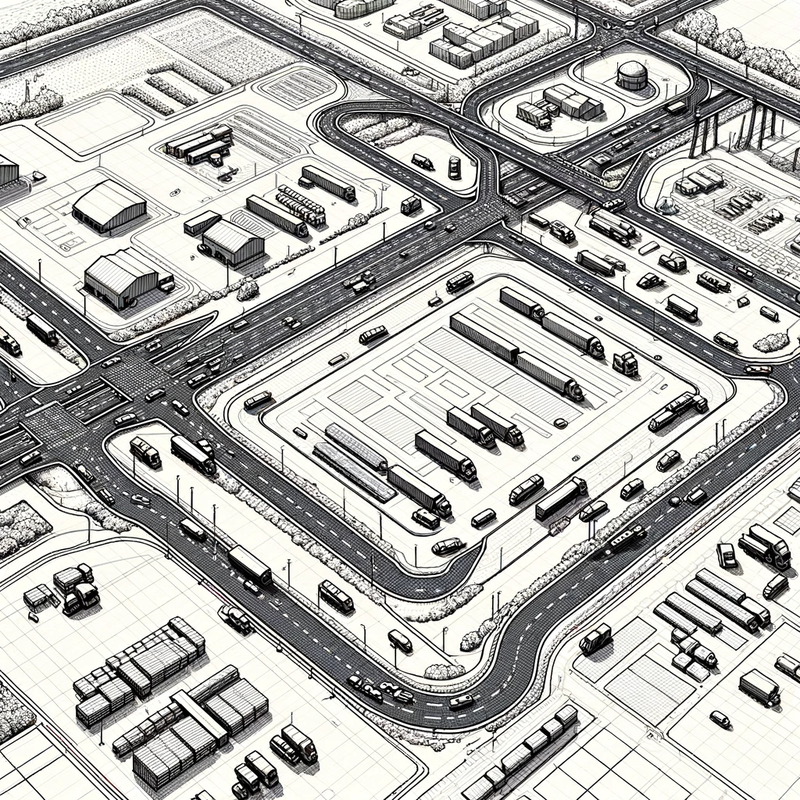Cost-Efficiency in Building: AI’s Role in Budgeting and Resource Allocation
The convergence of Artificial Intelligence (AI) with the construction and architectural sectors offers transformative potential. One of the most promising areas this union impacts is cost efficiency, particularly in budgeting and resource allocation. This merger promises to address some of the age-old challenges in construction, from budget overruns to wastage of resources. The infusion of AI amplifies the predictability of budgetary requirements and streamlines resource allocation to ensure timely and economically efficient projects.
The Budgeting Conundrum in Construction

Budget overruns have been an endemic issue in construction. Factors like inaccurate cost estimations, unforeseen complications, and market volatility can send budgets spiralling out of control. The traditional methods of budgeting, while systematic, often need more dynamic adaptability to account for real-time changes and challenges.
Enter AI.
Using advanced algorithms and machine learning models, AI can tap into vast databases of past projects, current market prices, and even real-time site data to provide more accurate budget forecasts. By analyzing patterns, trends, and anomalies, AI can provide previously unavailable insights or be too time-intensive to acquire.
Dynamic Cost Estimation
Static cost estimations, although useful, often fail to account for the fluidity of real-world projects. AI-driven dynamic cost estimation tools continuously update based on real-time inputs. Whether it's a sudden spike in the price of raw materials, a delay due to unforeseen circumstances, or a design modification, AI can recalibrate the budget, allowing stakeholders to make informed decisions swiftly.
Predictive Analysis for Risk Management

One of AI's standout features in budgeting is its ability to predict potential risks. By analyzing historical data from numerous projects, AI can flag potential risk factors, from geological challenges to supplier reliability issues. Highlighting these risks early in the project lifecycle allows for better financial preparation, ensuring that budgets have the necessary buffers to manage unforeseen expenses.
Resource Allocation and Optimization

Resource wastage, both in terms of materials and manpower, can severely impact project costs. AI can play a pivotal role in ensuring optimal resource utilization.
- Material Usage Optimization : AI can predict the required quantity of materials, minimizing waste. By analyzing the design, AI tools can suggest modifications or alternative materials that are more cost-effective without compromising the structural integrity or aesthetics of the project.
- Workforce Allocation : AI-driven tools can analyze the project's scope, timelines, and complexity to suggest the optimal workforce size and skill distribution. This ensures that there's neither a shortage nor an excess of workers at any given time, streamlining costs.
- Equipment Utilization : Equipment rental or purchase can be a significant budgetary component for large projects. AI can forecast the exact requirements, ensuring that equipment is neither underutilized nor overbooked.
- Dynamic Pricing Analysis : Instead of static contracts, AI can monitor global and local market trends, advising when to buy materials to get the best prices.
- Supplier Reliability Scoring : By analyzing historical data, AI can score suppliers based on their reliability, quality, and timeliness, ensuring that project managers can make informed decisions about partnerships.
- Logistics Optimization : AI can predict the best delivery schedules, routes, and storage solutions, ensuring that materials are available when needed without incurring excessive storage costs.
Supply Chain Management and Cost Efficiency
A significant portion of construction costs can be attributed to the supply chain, from procuring raw materials to ensuring timely delivery. AI can overhaul this process by:
Continuous Learning and Iterative Improvement
Unlike static tools, AI learns continuously. Every project it assists with adds to its reservoir of knowledge. Over time, this iterative learning process means AI-driven budgeting and resource allocation become even more precise and reliable.
However, as with all tools, AI's efficacy in ensuring cost-efficiency depends on the quality of data it's fed. Dirty or incomplete data can skew insights. Hence, integrating AI into construction processes also necessitates an overhaul of data collection and management practices.
Conclusion
AI's foray into construction budgeting and resource allocation heralds a new era of cost-efficiency. By offering dynamic, real-time insights and predictions, it addresses many of the traditional pain points that led to budget overruns and resource wastage. However, to unlock its full potential, stakeholders must view AI not just as a tool but as an integral part of the construction ecosystem, deserving investment in terms of both technology and training. The future of cost-efficient construction is not just about building smarter structures, but also about leveraging more intelligent tools in the process.
Our Services
View some of our most popular services below.











